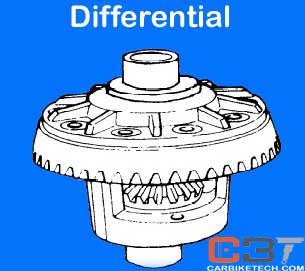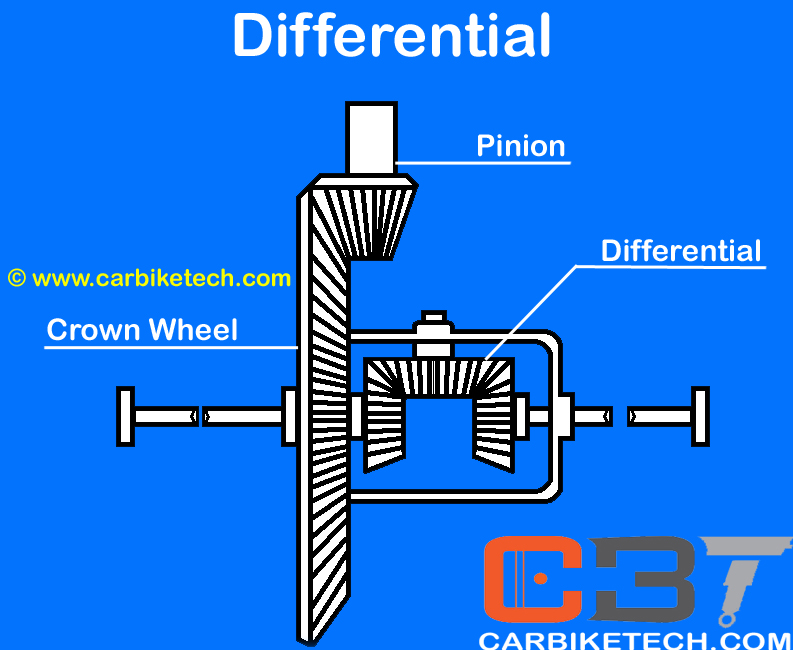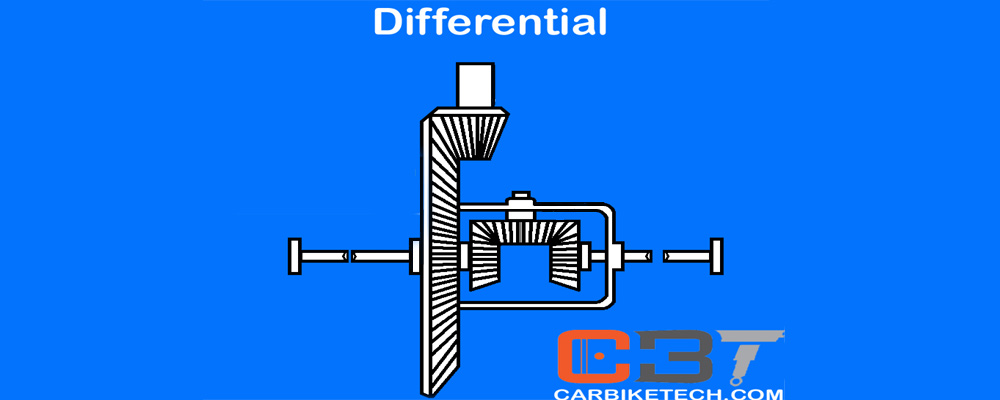What is Differential?
In order to avoid skidding and slippage when cornering, the driven wheels must follow a different path. Both the wheels must follow this path equally. So, the outer and inner wheels must rotate at different speeds because they do not travel the same distance. Otherwise, the tires will scrub the road. They will force the vehicle to move straight if the wheels are interconnected. You can reduce these effects if you proportionately distribute the engine torque to both the wheels. The manufacturers achieve this by employing the differential mechanism in the vehicle.

However, the earlier generation vehicles forced the wheels to run at the same speed. This resulted in rapid wear of the tires and caused difficulty while steering the vehicle. You can avoid this situation if the distance traveled by the outer wheels is proportionately greater than that traveled by the inner wheels. The differential mechanism allows the wheels to rotate at different speeds while getting the drive. Thus, it makes possible the independent rotation of wheels while maintaining the drive.
The differential mechanism works on the simple principle of a weighing beam. A differential is a set of gears having three shafts. Under this arrangement, the rotational speed of one shaft is the average of the speeds of the other shafts. Or else, it could be a fixed multiple of that average. Thus, the average rotational speed of the two driving wheels is equal to the input rotational speed of the drive shaft. The increase in the speed of the one wheel balances the decrease in the speed of the other.
How does this mechanism work?
The differential has a unique purpose. It distributes the power from the propeller shaft to the rear wheels. When a car travels around a corner, the outer wheels travel a longer distance than the inner wheels. If you install both the wheels on a dead axle, then they rotate independently of each other. Thus, they will turn at different speeds to compensate for the distance to travel. This is because there is no fixed connection/joint which binds the wheels together.
However, the driven wheels get a positive drive from the engine. Hence, there needs to be a device that permits them to rotate at different speeds without interfering with the momentum of the vehicle. To achieve this, the manufacturers install the differential mechanism. The differential has a set of bevel gears that can rotate independently of each other. Dana, ZF, and Eaton are some of the leading suppliers of the differential mechanism to the automotive manufacturers.

Basically, the differential is the ratio of the angular velocity of the gear that gives input to the output ratio. You can easily calculate the differential ratio directly from the number of teeth on the gears of the gear train. We explain the working of the differential mechanism in the following diagram.
Watch the differential mechanism in action:
Read More: What is Rear Wheel Drive?>>
